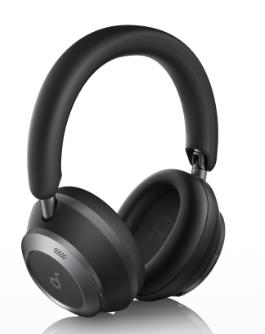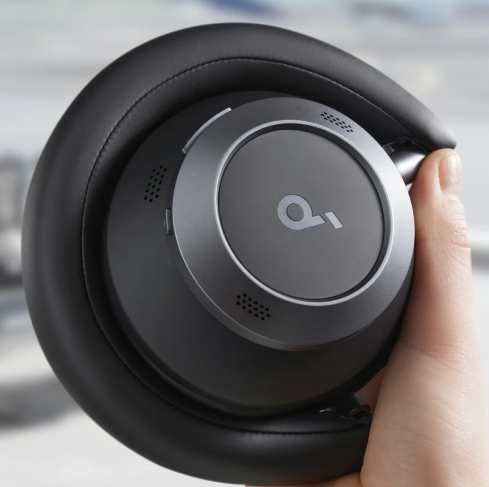In today's fast-paced world, where noise pollution is almost inevitable, noise-canceling headphones have become a must-have accessory for many. Whether you’re trying to focus in a busy office, enjoy your favorite music while commuting, or experience an uninterrupted movie on a flight, these headphones can dramatically improve your listening experience. With more options and features than ever before, it can be challenging to know where to start. In this comprehensive guide, we’ll dive deep into noise-canceling technology, highlight key features to look for and provide tips on how to choose the best headphones for your needs.

How Noise Cancelling Works
Noise-canceling headphones operate using a combination of passive and active technologies to block out unwanted external sounds.
Passive Noise Isolation: This is the simplest form of noise reduction, achieved through the headphone's physical design. Over-ear models with padded ear cups create a seal around the ears, while in-ear models rely on tight-fitting ear tips to block sound.
Active Noise Cancellation (ANC): ANC takes sound isolation a step further by using microphones and advanced algorithms to cancel out ambient noise. The microphones detect external sounds, and the headphones generate inverse sound waves that effectively "cancel" the incoming noise. This is especially useful for low-frequency sounds, like the hum of an airplane engine or background chatter.
While ANC headphones can significantly reduce unwanted noise, they’re not perfect. They work best in environments with consistent background noise and may not be as effective against sudden, high-pitched sounds.

Key Features to Consider
When choosing a pair of noise cancelling headphones, there are several factors to consider to ensure you get the best listening experience possible.
Sound Quality
While noise cancellation is important, sound quality is equally critical when choosing headphones. Look for models that deliver clear, balanced audio with deep bass, detailed mids, and crisp highs. Some headphones even allow users to customize the sound profile to suit their personal preferences, which can be a great feature for audiophiles seeking the perfect listening experience.
Battery Life
Active noise cancellation requires power, so battery life is an important consideration when selecting headphones. Some premium models offer up to 30 hours of playtime with ANC enabled, while others may only last 15 to 20 hours. Consider how often you’ll use the ANC feature and choose headphones that can keep up with your listening habits and needs.
Comfort and Fit
Headphones should be comfortable enough for long-term use, especially if you plan on wearing them for hours at a time. Over-ear models with plush, memory foam padding tend to offer the most comfort, particularly during extended wear sessions. If you prefer in-ear models, make sure they come with multiple ear tip sizes to ensure a secure and comfortable fit that suits your ears perfectly.
Portability and Design
If you’re frequently on the go, foldable or compact headphones are ideal choices for portability. Many noise-canceling models come with a protective carrying case for easy storage and transport, preventing damage while you travel. Additionally, wireless options with Bluetooth connectivity are highly convenient for commuters and travelers, eliminating tangled cords and enhancing mobility. Furthermore, some models feature sleek designs that match your personal style, making them not just functional but also fashionable accessories.
Controls and Features
Modern noise-canceling headphones often come with touch-sensitive controls, making it easier to adjust volume, skip tracks, or answer calls without pulling out your phone. Some models also feature smart sensors that automatically pause playback when you remove the headphones and resume when you put them back on. Additional features like voice assistant integration allow you to control your music and access information hands-free, enhancing the overall user experience.
Adaptive and Transparency Modes
While noise cancellation is the main feature, many headphones now include additional modes for more nuanced listening experiences. Some models offer adaptive ANC, which adjusts the level of noise cancellation based on your surroundings. This feature ensures optimal performance whether you’re in a quiet library or a noisy coffee shop. Transparency mode allows users to hear some ambient sounds without fully removing the headphones. This feature is perfect for moments when you need to be aware of your surroundings, such as walking in busy streets or waiting for an announcement at the airport.
Wireless Connectivity and Multipoint Pairing
Most noise-canceling headphones today are wireless, connecting to devices via Bluetooth. However, it’s essential to check the Bluetooth version and range. Bluetooth 5.0 and newer versions offer better range, faster connections, and improved audio quality over older versions. Additionally, multipoint pairing is a valuable feature for users who need to connect their headphones to multiple devices at once. For example, you can switch seamlessly between your laptop and smartphone without having to disconnect and reconnect each time.
Conclusion
Noise-canceling headphones are a game-changer for anyone looking to escape the distractions of the outside world and immerse themselves in their audio content. Whether you’re a frequent traveler, a remote worker, or simply someone who enjoys high-quality sound, choosing the right pair can elevate your listening experience. With advances in technology, the latest models not only offer excellent noise cancellation but also deliver superior sound, comfort, and features that cater to your specific needs. By considering factors like sound quality, battery life, and comfort, you can find the perfect pair of noise-canceling headphones to suit your lifestyle.

